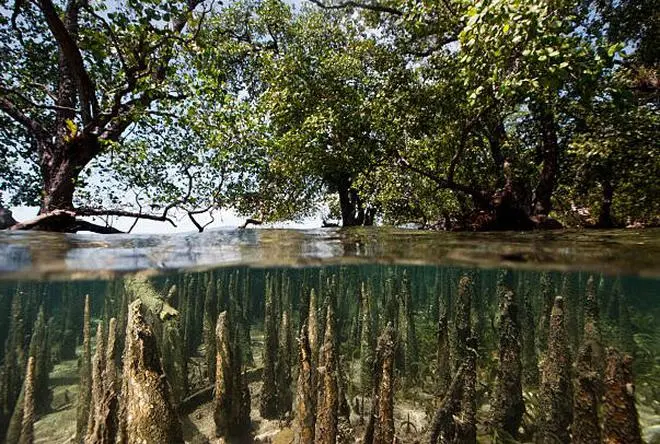Global sea levels are now rising by 3.6 millimetres annually—up from 1.4 mm per year in the last century. If this continues, in 80 years the ocean level could be more than 1 metre (3.3 feet) higher than today.
The impact of this will be staggering. Three times more coastal residents will be vulnerable to high-tide flooding than previously thought. A 2019 report estimated that areas where 200 million people currently live could fall permanently below the high tide line by 2100.

Rising seas is one of the manifestations of man-made climate change, which triggers thermal expansion of seawater as well as the influx of melting glaciers. Yet many still see it as a distant risk and fail to grasp the impact of the sea swallowing shores worldwide. Half of humans today live within 60 kms of a coast.
With the earth having the highest CO2 levels in human history, global sea levels rose by 14 cm between 1900 and 2000. That’s the fastest oceanic advance in 27 centuries.

Twelve nations have more than 10 million people living on land at risk from sea-level rise, including China, India, Bangladesh, Vietnam, Indonesia and Japan. The UN has identified Bangladesh as most vulnerable.
In addition to surface flooding, sea-level rise can push up the freshwater table and contaminate it with seawater making it unsafe for drinking or agriculture.

Humans aren’t the only ones who’ll suffer as sea levels rise. Any coastal plants or animals that can’t quickly move to new, less flood-prone habitats could face dire consequences.








Comments
Comments have to be in English, and in full sentences. They cannot be abusive or personal. Please abide by our community guidelines for posting your comments.
We have migrated to a new commenting platform. If you are already a registered user of TheHindu Businessline and logged in, you may continue to engage with our articles. If you do not have an account please register and login to post comments. Users can access their older comments by logging into their accounts on Vuukle.